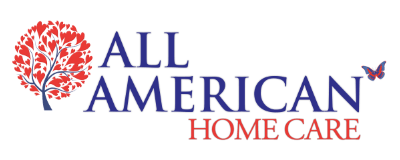The Road to Recovery: Understanding Stroke Rehabilitation
A stroke is a serious medical event. It can damage the brain. This often leads to new challenges. For stroke patients, the focus quickly shifts. It moves from immediate survival to recovery.
Stroke rehabilitation is this critical next step. It’s a comprehensive process. It helps individuals regain lost functions. It teaches them how to adapt.
This journey can be extensive. It demands dedication. But it offers profound possibilities for regaining independence. It greatly improves a quality of life.
Table of Contents
What is Stroke Rehabilitation and Why is it Crucial?
Stroke rehabilitation is a specialized program. It helps stroke survivors recover from the effects of a stroke. It’s not just about getting better. It’s about maximizing potential. It’s about adapting to changes.
The brain has an amazing ability. It can “rewire” itself. This is called neuroplasticity. Rehabilitation harnesses this power. It helps undamaged brain areas take over lost functions.
Rehabilitation is crucial for several reasons:
- Regain Skills: It helps relearn skills like walking or talking.
- Prevent Complications: It helps prevent complications such as muscle stiffness or blood clots.
- Improve Independence: The ultimate goal is to enable stroke patients to perform daily living activities independently.
- Enhance Quality of Life: It improves overall well-being. It helps individuals participate in life more fully.
The Rehabilitation Care Team
Successful stroke rehabilitation relies on teamwork. A multidisciplinary care team guides the process. This team works together. They create a personalized plan.
A typical care team may include:
- Physical Medicine and Rehabilitation (PM&R) Physician: This doctor specializes in rehabilitation. They oversee the entire rehabilitation plan.
- Physical Therapists: They help restore movement and strength.
- Occupational Therapists: They focus on daily living activities.
- Speech-Language Pathologists: They address communication and swallowing issues.
- Nurses: They manage medical needs. They provide support.
- Neuropsychologists: They help with cognitive and emotional challenges.
- Social Workers/Case Managers: They assist with resources and planning.
Phases of Stroke Rehabilitation
Stroke rehabilitation typically progresses through several phases. Each phase has distinct goals.
Acute Care Rehabilitation
This phase begins very early. It starts in the hospital. It might be within 24 to 48 hours post stroke.
- Early mobilization is key. Gentle exercises are introduced.
- The focus is on preventing secondary complications. This includes bedsores or pneumonia.
- The care team assesses initial needs. They prepare for the next stage.
Inpatient Rehabilitation
Many stroke survivors transition to inpatient rehabilitation facilities. This occurs after hospital discharge.
- Patients live at the facility. They receive intensive, daily therapy.
- They participate in multiple therapy sessions each day.
- The environment is structured. It’s designed for rapid recovery.
- The goal is significant functional improvement. It prepares them for returning home.
Outpatient and Home-Based Rehabilitation
Once safe to return home, rehabilitation continues. This is a vital long term phase.
- Outpatient rehabilitation services: Patients travel to a clinic for therapy sessions.
- Home-based rehabilitation: Therapists visit the patient’s home. This is ideal for those with mobility issues. It integrates therapy into their actual living environment. All American Home Care often supports this phase.
Key Therapies in Stroke Rehabilitation
Each therapy discipline addresses specific challenges affected by stroke.
Physical Therapy
Physical therapists focus on regaining physical function.
- Motor Control: Exercises help relearn skills like walking and balance. They strengthen weak muscles.
- Gait Training: Specialized training helps improve walking patterns.
- Range of Motion: Stretches and exercises prevent stiffness. They improve joint flexibility.
- Functional Electrical Stimulation (FES): This technique uses mild electrical impulses. It stimulates muscles that are weak or paralyzed. FES can help improve movement and strength.
Occupational Therapy
Occupational therapists help stroke patients with daily living activities. This is often called occupational therapy.
- Self-Care Skills: They teach adaptive strategies for dressing, bathing, and eating.
- Fine Motor Skills: Exercises improve hand and finger dexterity. This helps with tasks like buttoning shirts.
- Adaptive Equipment: They recommend tools. These tools make tasks easier. Examples include modified utensils or dressing aids.
- Home Modifications: They suggest changes to the home environment. These enhance safety and accessibility.
Speech Therapy
Speech therapy addresses communication and swallowing difficulties.
- Language (Aphasia): Therapists help improve speaking, understanding, reading, and writing abilities.
- Speech (Dysarthria): Exercises enhance muscle control for clearer speech.
- Swallowing (Dysphagia): Techniques help patients swallow safely. This prevents choking. It ensures proper nutrition.
Cognitive and Behavioral Therapy
Cognitive changes are common post stroke.
- Cognitive Rehabilitation: Therapists help with problem solving, memory, attention, and planning. They teach strategies to manage these deficits.
- Emotional Support: Psychologists or counselors help manage emotional changes. These include depression, anxiety, or frustration post stroke. A support group can also be invaluable.
Advanced Rehabilitation Techniques
Newer technologies and approaches are continually evolving in stroke rehabilitation.
- Robotics: Robotic devices assist with repetitive movements. They help strengthen limbs.
- Virtual Reality (VR): VR systems create immersive environments. They help patients practice real-world tasks.
- Constraint-Induced Movement Therapy (CIMT): This technique encourages use of the affected limb. The unaffected limb is restricted.
Long-Term Recovery and Adaptation
Stroke rehabilitation is a long term commitment. Recovery continues for months, even years post stroke.
- The most significant gains often occur in the first few months. However, improvement can still happen later.
- Consistency is key. Continuing exercises at home is vital.
- Adaptation involves learning new ways to perform tasks. It means embracing assistive devices.
- A support group can provide invaluable emotional backing. Sharing experiences with other stroke survivors is beneficial.
Preventing Complications and Enhancing Well-being
Rehabilitation also focuses on preventing future problems.
- Prevent Complications: Therapists help manage muscle spasticity. They prevent joint contractures. They provide education on skin care.
- Risk Factor Management: Your medical care team will help control blood pressure, cholesterol, and diabetes. These steps reduce the risk of another stroke.
- Lifestyle Changes: Healthy eating and regular physical activity are encouraged. This supports overall health.
Hope, Resilience, and a Brighter Future
The journey of stroke rehabilitation is a testament to human resilience. It’s a challenging but rewarding journey. With a dedicated care team, consistent therapy sessions, and comprehensive support, stroke patients can make remarkable progress.
All American Home Care is committed to being your partner. Discover our expert home care for stroke patients. We help you navigate this path, supporting continued progress towards a higher quality of life.
Related Articles:




